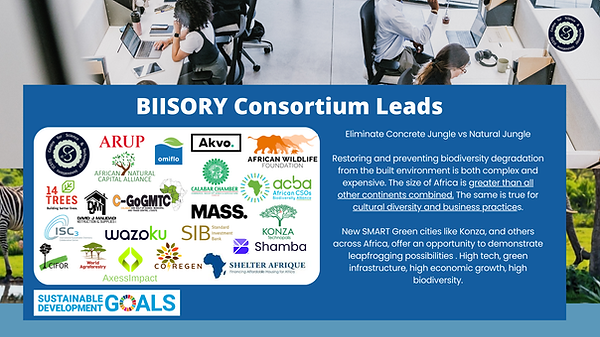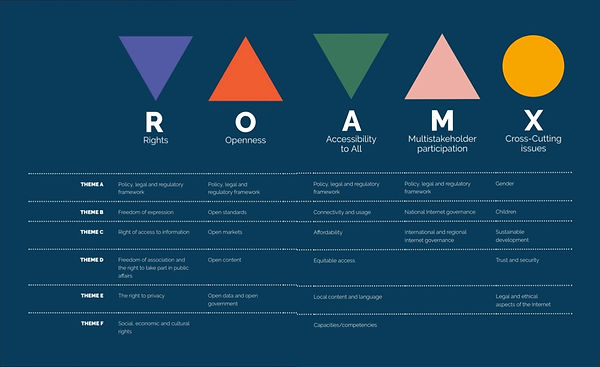Web of Applied Science
Web of Science is a term used to describe both the knowledge repositories and the research connections that form the global network of science and technology innovation. Internet access to the World Wide Web (www) as well as Internet of Things (IoT) enabled devices have democratized both the availability of data and applications that can be developed.
At CSTI we recognize that the emergence of new technology and products is driven by the quest to resolve culturally specific social needs. If you don't have apple trees in your local ecosystem, the need for inventing an apple peeling machine is not present. Similarly, if mosquitoes do not plague your natural environment, the need to develop anti-malarial prophylaxis is not a priority. Internet banking on a mobile phone using short code (MPESA) instead of an internet signal (Zelle®) is driven by a cultural value that prioritizes the rapid distribution of funds to remote rural areas over the assumption that banking needs of urban users are directly applicable to rural residents. Government's role as a regulatory enforcer versus a regulatory facilitator of enabling environments is a socio-cultural norm that affects the way in which science and technology innovation emerges.
Based on the above understanding, it follows that the development of IoT applications and products will be driven by the socio-economic and socio-ecological drivers and the prioritization that emerges from cultural values. Rather than attempting to prescribe one-size fits all models as the hallmark of "scalability," we invite you to think about and discover ways in which interoperability can be used to enhance hyper-localized customization of both science and technology.

Circular Bioeconomy
Human activities have historically generated pollution and waste which accumulates in landfills and dumpsites. The accumulated waste is carried by wind or rainfall or directly dumped by humans into the same water bodies used for drinking water, crop irrigation, and fisheries. A summary of the effects of human activities on the degradation of Eastern Africa's land and aquatic systems can be found in Odada, Olago and Olaka's 2020 article. Rapid industrialization is improving the quality of life across the globe while simultaneously depleting resources from the natural ecosystems that sustain life and human comfort. Pesticides sprayed on crops also flow into natural water systems when there is rain. Alarmingly high levels of globally banned pesticides (persistent organic pollutants such as organochloride) that create a serious health risk have been found in Kenya's Nairobi River (Ndunda, Madadi & Wandiga, 2018). Local populations are able to identify longitudinal (10yrs to 40 yrs) changes in climate and temperature (Yvonne, Ouma, Olago & Opondo, 2020). An increase in regional weather reporting hubs such 3D printed automatic weather stations (3D PAWS) would enable more accurate analysis on the relationship between human polluting activities and climate variability (Singh, Daron, Bazas, Ziergovel, Spear, Krishnaswamy, Zaroug & Kituyi, 2018). Both mitigation and adaptation activities need to be scaled up at the community level in order to reduce and reverse the negative effects of human pollution on local ecosystems.
Circular Bioeconomy is an emerging field in which the chemical processes and the raw material supplies for products are diverted from landfills towards industrial raw material supply chains where they are converted into new products. Extended producer responsibility practices such as recovery of waste plastic to make plumbing pipes and bottles is an early stage circular bioeconomy activity. If you keep waste banana peels in a clean bin instead of the garbage can, they can be blended as a micronutrient fortifier for smoothies, used as flavoring for meats and traditional African dishes, used as animal feed, and, if you still have left over banana peels, they can be carbonized and used as aggregates in building materials (Wandiga C., 2020). Increased use of IoT sensors and material flow tracking through platforms such as Uchumi Duara (Uduara for short) will enable improved tracking of the type, quantity, and quality of materials that are available for reuse. Safer chemical processes can be developed using chem analytics to predict toxic by-products. Digital construction and manufacturing tools enable greater supply chain traceability as well as rapid process redesign.
IoT sensors are nanoscale data capturing tools that can be easily configured to a variety of uses. An IoT sensor can measure temperature in soil, in freshwater, in an industrial furnace, on a human body. The same is true for measuring carbon dioxide and green house gases as well as chemicals that are toxic in large or small quantities. Responsible Care® guilding principles provide a global voluntary standard that, if taken seriously and integrated with green chemistry and biomimicry principles, will enable a market driven transition towards safer chemical management in the reuse of products, by-products, residues, and waste.
Industry Collaboration Network

Learn more about the benefits of Citizen Science from the Association for Advancing Participatory Sciences Journal
Community employment skills are enhanced when, in addition to technical or theoretical knowledge, collaboration pilots focus on developing transdisciplinary soft skills development coupled with training focused on market/demand oriented activities that are community conscious and location specific (Mihyo, Mmari & Msami, 2021). Digital skills are a new requirement for 21st century, globally connected workplaces. We blend economic development and climate strategies by enhancing urban tree planting, reducing urban heat islands, and using biochar in 3D printed buildings as landscaping mulch. These efforts align with Sustainable Development Goals (SDGs) and the African Union’s Agenda 2063, particularly in promoting sustainable cities and communities (SDG 11) and climate action (SDG 13). By preventing the excessive sealing of virgin land, we promote efficient land use and support the creation of sustainable, resilient urban ecosystems.
Working with Geviton Enterprises, CA Creative ,Fablab Winam, Aloura Makare Advocacy community based organization (CBO), WISE Kenya, Sote Hub and Kenya Marine & Fisheries Research Institute (KMFRI) to pilot low-cost water quality monitoring sensors using the accuracy of physiochemical parameters:
Phase 1 parameters (click here for report)
-
temperature
-
pH
-
turbidity
-
conductivity
Our goal is to develop an accurate baseline via which to assess the quality of recycled water in live ecological systems such as constructed wetlands.
Imagine Citizen Science and Drone Data Collection for Wetlands Management and Mitigation Banking...

Photo Courtesy of: Jason Blackeye
Circular Bioeconomy Learning Resources

Hypolimnas usambara butterly as part of the Base Titanium Kwale post-mining rehabilitation which includes increasing the abundance of IUCN Red List species identified prior to mining activities.
Base Titanium's Indigenous Tree Nursery & Arboretum is the largest of its kind in Africa with:
-
285 indigenous tree species
-
over 2,500 critically endangered trees propagated
-
close to 85,000 trees planted
Additional regenerative ecological activities:
-
99 butterfly species in the biodiversity corridor
-
conversion of mine tailing silt traps into wetlands

Transcontinental dialogues on biocapacity measurement:
Stanford University Millennium Alliance for Humanity and the Biosphere (MAHB)
Climate Change & Sustainability Basics (CC&SB) Society of Kenya
University of Nairobi Institute for Climate Change and Adaptation (ICCA)
Built Environment Surveyors & Infrastructure Consultancy (BESIC) Group
International Sustainable Chemistry Collaborative Centre (ISC3) localized training on plastic waste, toxicity, and building material circularity.


If, like us, you want to use 3D printed designs to promote a resurgence of African vernacular architecture and fractal designs, you can use Tinkercad for open source collaboration. Based on the ISC3 data on plastics and fire toxicity, recycled polystyrene is your best choice for desktop 3D printed models. Alternatively, you can test larger scale models using industrial polystyrene. You can also discuss which type of plastic you would prefer to use for medical devices fabricated by our partners at Kijenzi Digilab. You can also reduce the risk of fire and lower toxicity when exposed to 3D printing thermoset filament (aka extrusion) by using bromine free flame retardants with polyphosphonates or phosphonates as the primary chemical compound (Lens, Sun & Kagumba, 2019). 3D printing also enables testing of emissions, energy consumption, and durability of concept product designs before they are scaled for mass production.
CSTI Theory of Change
The members of the CSTI Circular Bioeconomy Consortium collaborate to promote constructive linkages between science and industry for the enhancement of environmentally and socially sustainable economic development. Environmental, Social and Governance metrics are used to develop commercially viable and profitable prototype models that leverage advanced scientific knowledge of technologies that reduce GHG emissions and toxic chemicals while improving circular material flows. Social inclusion and reduced climate related livelihood risk is achieved by ensuring the design preferences and affordability requirements of distressed communities are included in the prototype models. Emerging knowledge trends from the natural sciences, social sciences, arts and humanities are used to develop future fit business models that enable the creation of culturally situated best practices. Change is achieved through the development of communities of practice that utilize our seven principles of natural capital management.
CSTI Framework: The 7Ps of Natural Capital Management: a guide to Socially Embedded Industrial Ecology*
P1: Policy (connectivity): governance mechanisms are needed to ensure industrial products for GHG emissions and toxic chemicals reduction also generate biodiversity products and social resilience practices that are well suited for place specific ecosystem restoration while improving circular material flows.
P2: Profits (diversity and complexity): are gains of natural capital that are obtained from restoration activities which are designed and priced to benefit members of distressed communities in addition to the middle and upper income markets.
P3: Place (setting): is the geographically specific rehabilitation of IUCN Red List species and beneficial indigenous species for biodiversity enhancement of ecosystem landscapes within which industrial activity is occurring.
P4: Promotion (redundancy): of natural resource conservation and management principles as knowledge sharing between industry, communities, scientists, and government.
P5: People: performing safer industrial activities that are climate resilient as well as beneficial for long-term (over 5yrs) environmental, local employment, and systemic health.
P6: Processes: for ecological restoration must be integrated with industrial processes for GHG emissions and toxic chemicals reduction while improving circular material flows.
P7: Physical Evidence (scale): of baseline conditions and quantifiable improvements that can be verified through independent audits.
*Adapted from: Beller E, Robinson A, Grossinger R, & Grenier L. (2015). Landscape Resilience Framework: Operationalizing ecological resilience at the landscape scale. Prepared for Google Ecology Program. A Report of SFEI-ASC’s Resilient Landscapes Program, Publication #752, San Francisco Estuary Institute, Richmond, CA Retrieved from https://www.sfei.org/documents/landscape-resilience-framework-operationalizing-ecological-resilience-landscape-scale





UNESCO Resources

UNESCO ROAM—X internet universality framework: https://en.unesco.org/themes/internet-universality-indicators/background
UNESCO World Commission on the Ethics of Scientific Knowledge and Technology (COMEST): https://en.unesco.org/themes/ethics-science-and-technology/comest

UNESCO ICT Education Competency Framework: https://en.unesco.org/themes/ict-eduction/competency-framework-teachers-oer
